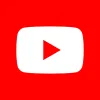Take a look inside 5 images
YouTube
Pros: Endless, updated content. Captions and playback adjustments.
Cons: Ads and inappropriate content. Algorithm can lead viewers astray.
Bottom Line: There's no escaping YouTube, and with some curation, tweaking of privacy settings, and media literacy prep, it can provide infinite learning opportunities.
How Can I Teach with This Tool?
YouTube isn't just a video site; it's the second most popular search engine in the world. This means that everyone -- including students and teachers -- goes to YouTube to get a handle on any topic. It's just a fact of life (as much as it might irk some educators). Of course, one the biggest challenges with YouTube is sorting through the never-ending stream of content -- much of it not necessarily appropriate for classrooms or ideal for learning. One thing teachers can do to make YouTube work better for learning is to curate playlists for students, vetting content ahead of time and saving students from going astray. Host these playlists on a class site. Tech-savvy teachers should also consider creating their own YouTube channel and hosting instructional materials there. This will give students (in their classroom and possibly from all over the world) a place to learn class content wherever they are.
To help students navigate YouTube, teachers will want to do some media literacy work, encouraging students to check sources, verify information, and examine a variety of credible perspectives. Students should also practice active viewing: taking notes, pausing, rewinding, and rewatching videos. Also, make sure to point out the closed-caption and playback speed adjustment features. Finally, teachers and students should dig into Google and YouTube's privacy settings, and perhaps even turn off Watch History to partially escape the algorithm.











